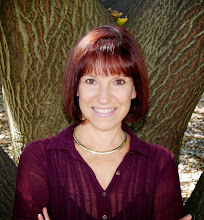 |
| I got 60 butternut squash from ONE seed! Follow Foods For Long Life on Facebook and Pinterest. |
My Husband, the Amazing Farmer
Our friends always laugh when they see the size and yield of the vegetables from our garden. It's simply unbelievable how much our garden produces from a single seed. This year the winning vegetable was our butternut squash. One seed yielded a plant that produced 60 butternut squash, each weighing between 2 and 4 pounds - about 200 pounds of squash in all. A few even weighed as much as 5 pounds! I used a year-old seed from a packet of Johnny's JWS 6823 PMR Organic Squash Seed. Their website says the average yield for this seed is 4 to 5 squash per plant. I can't wait to write to them to tell them that we got 60!
I believe the secret is Doug's magic dirt formula. Since everyone always asks us, "what's in your soil", I thought I'd write this blog post. It's kind of tough to create a recipe for this since he "adds a little of this and a little of that" and deals in huge quantities, but I think this will come close.
Doug's Magic Dirt Formula
Requirements:
Wheel barrel
Shovel
Ingredients
1 cubic foot of native soil from your yard
1 cubic foot bag of organic compost
2 pounds earthworm castings
1 cup Biochar
1 1/2 tablespoons glacial rock dust
1 tablespoon mycorrhizae
Directions
#1 - Dig up a cubic foot of soil from your yard and place it in a wheel barrel.
#2 - Add a cubic foot of organic compost to the wheel barrel and mix well.
 |
| Compost is decayed organic material such as leaves, grass, etc. which greatly enriches your soil. You can buy it or create a compost pile from your vegetable scraps. |
#3 - Add earthworm castings.
 |
| This is basically worm poop and is used as a fertilizer in organic farming. |
#4 - Add Biochar.
 |
| Biochar is burnt, carbonized biomass which is used as an amendment for soil to help retain water and nutrients. |
#5 - Add glacial rock dust.
 |
| Contains a wide variety of trace minerals that replenishes the soil. Glacial rock dust is a natural product produced from glacial action taking place over thousands of years. |
#6 - Mix it all together in the wheel barrel and then add to the planting area.
#7 -Sprinkle mycorrhizae in the hole where you place your seeds or cuttings.
Well, that's it. Sounds like a bit of trouble but the results are worth it! You will not need to fertilize your plants - this will do it all. You can double, triple, quadruple or cut this recipe in half.
Warning: this recipe may result is lots of cooking, canning, freezing, dehydrating, and searching for friends and neighbors to take your vegetables!













1 comment:
Hallelujah! I've been wanting to know Doug's dirty (ha!) secret for years. Now maybe I can grow something wonderful too, but lets not forget Joanne's magical seeds! Thanks.
Post a Comment